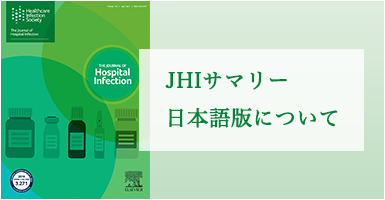外国から転院してきた重度の感染であった COVID-19 患者に由来したカンジダ・オーリス(Candida auris)の院内伝播と感染制御★★
Intrahospital transmission and infection control of Candida auris originating from a severely infected COVID-19 patient transferred abroad E.H. Lee*, M.H. Choi, K.H. Lee, D. Kim, S.H. Jeong, Y.G. Song, S.H. Han *Yonsei University College of Medicine, Republic of Korea Journal of Hospital Infection (2024) 143, 140-149
背景
多くの環境でしつこく生き延びるカンジダ・オーリス(Candida auris)が病院内で広がると、持続する定着と感染が引き起こされる可能性がある。C. auris の大規模なアウトブレイクを、新型コロナウイルス感染症(COVID-19)のパンデミック中に、研究病院の集中治療室(ICU)で経験した。
方法
発端となった重症の COVID-19 患者は、2022 年 1 月にベトナムから転院してきて、入院から 10 日後に C. aurisによるカンジダ血症を発症した。2022 年 6 月中旬から 2023 年 1 月まで、3 つの ICU で、強化した感染予防・制御(IPC)対策を実施した。すなわち、(1)C. auris 陽性例に対する接触の予防措置と隔離、(2)患者、濃厚接触者、ICU 専属の医療従事者について、点有病率を含む監視培養(N = 718)、(3)10 倍に薄めた漂白剤による環境の徹底的な消毒、(4)ICU の全患者を対象とした2%クロルヘキシジン浴。表面と共用物の環境培養(N = 276)は、すべての環境培養が陰性となった 2022 年 9 月上旬まで実施した。
結果
2022 年 2 月から2023 年 1 月までの C. auris 陽性患者 53 例では、侵襲性感染の結果、カンジダ血症が 7 例、肺炎が 1 例に発生した。C. auris が、耳垢で汚染された再使用可能な鼓膜温度計から分離された。環境培養における C. auris の分離率は、2022 年 6 月の 6.8%から2022 年 8 月の 2.0%まで減少し、鼓膜温度計ではもう検出されなくなった。医療従事者への定着は著しく稀であった(0.5%)。C. auris 陽性患者の数は、7 月にピークに達し(N = 10)、そして、徐々に減少した。2023 年 1 月までには、C. auris が ICU で分離されなくなった。
結論
接触予防策と隔離・環境培養・サーベイランスによる積極的な IPC 対策、鼓膜温度計のコンタミネーションの除去、入浴は、この C. auris のアウトブレイクの制御に有効であった。
監訳者コメント:
再使用可能な医療器具は、C. auris 感染の媒介物となりうる。医療器具の清掃・消毒を見直す必要がある。
同カテゴリの記事
Financial incentives for infection prevention and antimicrobial stewardship to reduce antibiotic use: Japan’s nationwide observational study Y. Okubo*, A. Nishi, K. Uda, I. Miyairi, N. Michihata, R. Kumazawa, H. Matsui, K. Fushimi, H. Yasunaga *National Center for Child Health and Development, Japan Journal of Hospital Infection (2023) 131, 89-98
Healthcare-associated infection impact with bioaerosol treatment and COVID-19 mitigation measures M.H. Ereth*, J. Fine, F. Stamatatos, B. Mathew, D. Hess, E. Simpser *Mayo Clinic College of Medicine, USA Journal of Hospital Infection (2021) 116, 69-77
Predictors of hypervirulent Klebsiella pneumoniae infections: a systematic review and meta-analysis H. Namikawa*, K.-I. Oinuma, K. Yamada, Y. Kaneko, H. Kakeya, T. Shuto *Osaka Metropolitan University, Graduate School of Medicine, Japan Journal of Hospital Infection (2023) 134, 153-160
Bacterial contamination of water used as thermal transfer fluid in fluid-warming devices M. Schnetzinger*, F. Heger, A. Indra, O. Kimberger *Medical University of Vienna, Austria Journal of Hospital Infection (2023) 141, 49-54
SARS-CoV-2 surface and air contamination in an acute healthcare setting during the first and second pandemic waves J.A. Otter*, J. Zhou, J.R. Price, L. Reeves, N. Zhu, P. Randell, S. Sriskandan, W.S. Barclay, A.H. Holmes *Imperial College London & Public Health England, Hammersmith Hospital, UK Journal of Hospital Infection (2023) 132, 36-45



